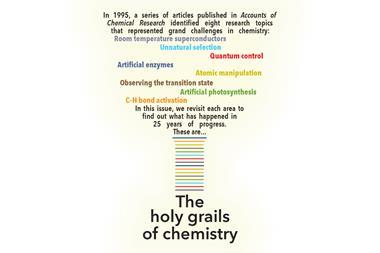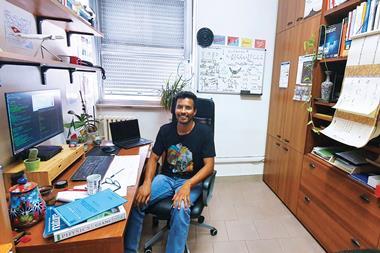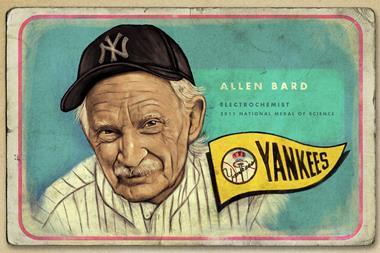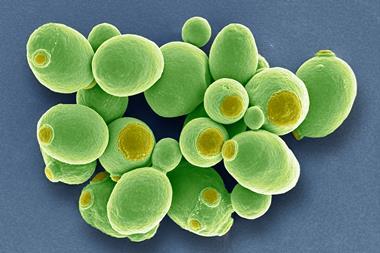The true value of a scientific quest comes from the journey, not the goal writes Philip Ball

The holy grail was originally neither holy nor a grail (a chalice-like cup). It first featured in a romance, Perceval ou le Conte du Graal written by the Frenchman Chrétien of Troyes around 1190. This poem tells the tale of the Arthurian knight Percival, who encounters the ‘grail’ – more like a shallow dish with miraculous powers – while dining with the magical Fisher King. The image perhaps derived from old Celtic myths, but later translators of Chrétien’s popular tale turned it into a holy relic: Christ’s chalice from the last supper, used to collect his blood at the crucifixion.
All this seems a peculiar metaphor for setting scientific grand challenges. But it might be more apt than you’d think, especially for chemistry. One of the translators of Chrétien’s romance was Wolfram von Eschenbach, a German knight and poet who allegedly could neither read nor write but worked by dictation. In his Parzival, composed in the early 13th century, Wolfram interprets the grail as a stone, also called the lapis exilis, which could confer eternal youth like the elixirs of the alchemists. The philosopher’s stone that could transform base metals to gold was sometimes identified with this wondrous lapis.
Like the grail, the philosopher’s stone was a figment of the imagination that you could waste a lifetime seeking – hardly a good model for a target of scientific research. Except… you could discover other useful things on the way. In the nineteenth century, when alchemy was frequently mocked as deluded fantasy, Justus von Liebig had the perception to note its value. Without the philosopher’s stone to act ‘powerfully and constantly on the minds and faculties of men [sic]’, he wrote, ‘chemistry would not now stand in its present perfection.’ For in order to know that the stone did not exist, ‘it was indispensable that every substance accessible… should be observed and examined.’ This is not an entirely fair picture of alchemy – practitioners were doing much else besides seeking the marvelous stone, not least making dyes, medicines and soaps – but it does express the value of a motivational goal for research as a generator of useful spinoffs.
Is this just fantasy?
Like the grail, the philosopher’s stone was a figment of the imagination that you could waste a lifetime seeking – hardly a good model for a target of scientific research. Except … you could discover other useful things on the way. In the nineteenth century, when alchemy was frequently mocked as deluded fantasy, Justus von Liebig had the perception to note its value. Without the philosopher’s stone to act ‘powerfully and constantly on the minds and faculties of men [sic]’, he wrote, ‘chemistry would not now stand in its present perfection’. For in order to know that the stone did not exist, ‘it was indispensable that every substance accessible … should be observed and examined’. This is not an entirely fair picture of alchemy – practitioners were doing much else besides seeking the marvellous stone, not least making dyes, medicines and soaps – but it does express the value of a motivational goal for research as a generator of useful spin-offs. As Professor Waldman tells Victor Frankenstein in Mary Shelley’s 1818 novel, when the naïve young medical student confesses his admiration of alchemists, ‘The labours of men of genius, however erroneously directed, scarcely ever fail in ultimately turning to the solid advantage of mankind.’
The art of successful science often lies in being prepared to reorient your research goals
It’s with this sentiment in mind that we might consider the value of setting ‘holy grails’ for chemistry. All of those considered in this issue are more achievable than the philosopher’s stone, and indeed in many of the cases (artificial enzymes, unnatural selection, C–H bond activation) the goal is to improve on what we already have. But the art of successful science often lies in being prepared to reorient your research goals when something unexpected but interesting turns up. Whether it is William Perkin trying to make quinine in the 1850s and ending up launching the synthetic dye industry, or Hideki Shirakawa contemplating a visiting scientist’s error in a synthesis of polyacetylene in the 1960s and realising he had a conducting polymer on his hands, it can pay to switch your quest when a lucky accident occurs.
Grail rules, OK?
This might be considered the first rule of a scientific holy grail: the value may lie in the journey, not the destination. (Percival never reaches the grail in Chrétien’s unfinished poem.) The second rule is not to succumb to obsessive pride and lust for your goal, as Parzival does in von Eschenbach’s version: he ends up doing some dumb and reprehensible things on his quest, and suffers as a result.
There’s a danger that scientific holy grails become sticking plaster technofixes
The third rule is to remember that panaceas – whether grails, philosopher’s stones or elixirs – don’t really exist. Yes, grand scientific challenges have the potential not only to stimulate new ideas and discoveries but also to alleviate urgent problems: artificial photosynthesis, for example, could offer abundant clean energy, while room-temperature superconductors could help to make more efficient use of it. But there’s a danger that scientific holy grails become sticking plaster technofixes. Some would consider a colony on Mars to be a desirable holy grail, but if that is portrayed as a way of saving humanity from the harm we are wreaking on our own planet, we should be as wary of it as of the evil magician Klingsor in Richard Wagner’s operatic version of Parzival.
Such technofixes have, in other words, a tendency to perpetuate rather than address underlying problems. Right now there are few more tempting holy grails than vaccines and better tests for Covid-19, but professor of public policy Shobita Parthasarathy has warned that ‘We can’t just ‘tech’ our way out of the pandemic.’1 For everyone to benefit, the disadvantaged communities that have been hardest hit must be included in the way such innovations are developed and applied – and ultimately we need to tackle the socioeconomic inequalities that the crisis has highlighted. Often, our real problem is not that we have failed to find the grail, but that we have created the need to look for it.
References
1 S Parthasarathy, Nature, 2020, 585, 8 (DOI: 10.1038/d41586-020-02495-y)












No comments yet